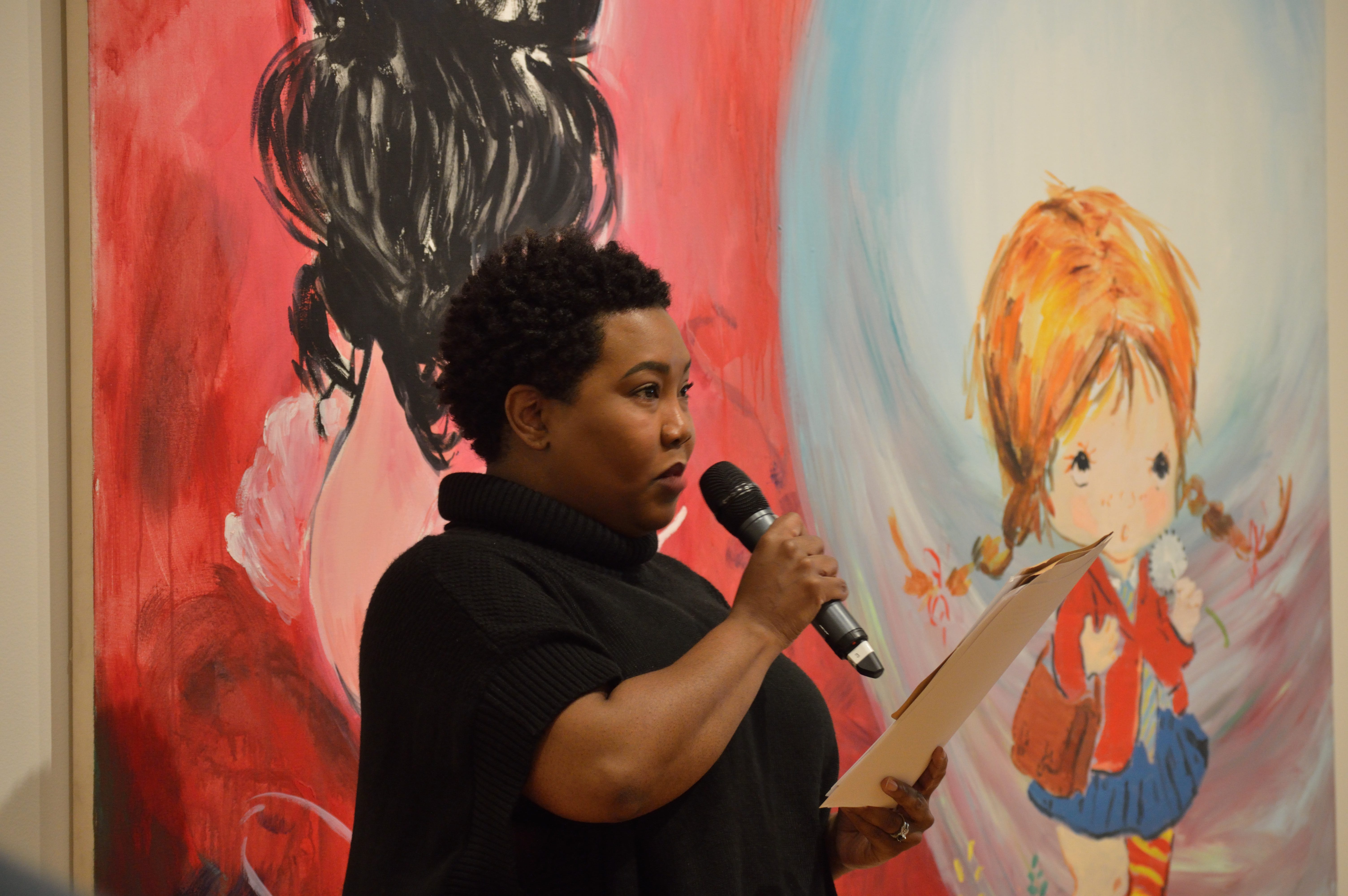The Art of Poetry: Bringing Art to Life Through Words
- Blog Post
- Events and Programs

On Saturday, April 21, in honor of National Poetry Month, the CMA hosted Speak Up, Speak Out: Ekphrastic Poetry Day in partnership with Literary Cleveland (opens in a new tab), Lake Erie Ink (opens in a new tab), and Twelve Literary Arts (opens in a new tab). Ekphrasis is a Greek work, meaning description; ekphrastic poetry is directly inspired by art.

Through a series of workshops, an open mic, and in-gallery performances, we empowered people to share and develop new ideas and perspectives about works in the museum’s collection. And we were proud to convene and collaborate with the local organizations that are shaping our city’s literary arts scene with programs that encourage and showcase creative writers.
At the CMA, we want to present public programs that introduce new ways to experience our collection, using it as a lens through which we understand today’s world. With the help of these poetic expressions, we hope you find new meaning in the artworks, never looking at them the same way again.

At the CMA, we want to present public programs that introduce new ways to experience our collection, using it as a lens through which we understand today’s world. — Deidre McPherson, Department Director of Public Programs
Ekphrastic poetry brings art to life through words. Read a selection of works below to see how poets reimagined artwork from the CMA’s collection with words in honor of National Poetry Month.

Study №5 by Michelle R. Smith
After Just the Two of Us by Julia Wachtel
Women should be gentle.
Women should be meek.
It is best when they serve &
It is worst when they speak.
Girls are so small.
Girls are so cute.
We love when they are powerless &
We love when they are mute.
The best type of girls & women —
The ones we enjoy the best —
Are those put down in pictures &
Trapped at our behest.
Dominance is so primary
To being American & male
That we will buy girls or women
If someone puts them on sale.
So let’s celebrate misogyny,
Objectification
& all the anti-woman violence
Still plaguing our nation.

Photograph of the Glen Canyon by Ali McClain
After Brett Weston’s Landscape, Glen Canyon
When we visit the Glen Canyon
We take a three-hour trail
And eat our lunch on a dramatic rock.
I serve hummus and avocado toast.
It is fall.
The weather is mild, the sun
Easy on our skin.
We watch and watch and watch.
Nothing is as beautiful, as quiet, as still.
I envy the river’s reach.
So fine are the clouds.
So wonderful to simply gaze and relish nature’s work.

Going Nuclear by Mary E. Weems
After Cumolo by Sanford Biggers
When the world ends
in the fire next time
some will be making breakfast, love,
quilting, painting, writing their version
of important moments
no one will be left to read.

Saint Peter Repentant by Kisha Nicole Foster
After Saint Peter Repentant by Georges de La Tour
Pleading for forgiveness
for wrong done.
Staring stoic at memories
vivid colors of grief.
Ignoring our flesh voices
for spirit speak.
Time now is reverence
the giving up of our
wrongdoings.
Posture triangular
light dimmed
a sign of sleeplessness
Hands clasping
cupping flaws
Somber we sit in a state of shock
A rooster crowing
our denial.

Rho 1 by Damien McClendon
After Jack Whitten’s Rho 1
my mind is all railroads
to places that probably need more music
places that can use a record store of wonder
yet the Airway is fixed in static
the doorway is the only thing not broken something out there still thinks I can be a bird
you have to believe in Wings to be a bird and I am too much a railroad laying on the earth broken
always in need of more music always in reception of infinite static
and unforgiving wonder
suspended unmoving wonder
you are the bird
Soaring Over ocean static
never dreaming of railroads
because freedom is your music
and it has never been broken
so it has always been broken
or at least felt The Wonder
of shattering and all that music
what a bird would give to not be a bird to have the need for railroad
to just be static
those with wings in the boredom of static willing to fall from the sky to fill the broken
things on tracks remind me of absence the railroad going nowhere worth the loss of where we are
the Wonder is worth more
and any bird will tell you what train to take to find the music
and Truth is all the paths lead music even the static
all the birds will send you this until the broken is not as big as the wonder and all the birds will send you
a railroad native music no static anywhere Birds everywhere Wings not broken
Wonder as long as a railroad to Infinity
Read a larger selection of poems (opens in a new tab) from poets who participated in the inaugural Speak Up Speak Out event, and check out a series of images from this program below.
































